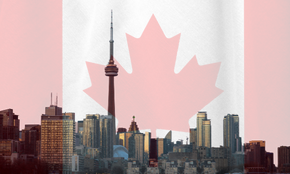MBBS in India vs Abroad: Making the Right Choice for Your Medical Career.
Cost of MBBS in India vs Abroad: A Detailed Comparison
MBBS in India vs Abroad: Making the Right Choice for Your Medical Career.
Deciding where to study MBBS is a big choice for future doctors. Many students are torn between staying in India or going abroad. This blog will help you understand the important factors to consider for your medical career.
In India, medical school costs vary a lot. Government colleges can be very affordable, under INR 10,000 a year. But, private colleges start at around INR 10,00,000. On the other hand, studying abroad can cost between INR 25,00,000 and INR 50,00,00012. This article will give you key insights into studying medicine abroad and what you need to know.
#Key Takeaways
- The choice between pursuing MBBS in India or abroad can greatly shape your medical career.
- Understanding the costs associated with both educational paths is critical for financial planning.
- Quality of medical education can vary significantly between India and foreign institutions.
- Internship and clinical exposure opportunities differ, impacting hands-on experience.
- Degree recognition and licensing requirements are vital factors to consider.
#Introduction to MBBS as a Career Choice
The MBBS career choice is a big dream for many students in India and worldwide. They want to help others and make a difference in healthcare. With about 657 medical colleges in India, the competition for medical aspirants3 is fierce.
To get in, students must meet tough requirements and pass the NEET-UG exam. This exam is now key for getting into medical schools in India and abroad3. While becoming a doctor is highly respected, students need to think carefully about their choices. The chance of getting a seat has dropped from 6.68% to 5.29% in five years4.
The MBBS program in India lasts five years, with an extra year for an internship5. After finishing, doctors can choose specializations like cardiology or pediatrics. This makes the career look bright. But, the cost is high; government colleges charge from INR 1,355 to INR 400,000 a year. Private colleges can cost even more, from INR 10,000 to INR 3,500,0003.
With the pandemic changing healthcare, students should really think about why they want to be doctors. Looking into studying abroad can offer a chance to see new places and learn from the latest methods. This makes MBBS a global journey3.
#Overview of MBBS in India
Medical education in India is vast and competitive. There are over 450 government and private medical colleges. This makes the number of students wanting to study MBBS keep growing. The admission process is tough because of this.
NEET eligibility is key for those wanting to study medicine. This national entrance exam decides if a student can get into medical school.
#Admission Process and NEET Eligibility
To get into MBBS programs in India, students must pass the NEET. This exam has made the admission process easier for everyone. To qualify, students need at least 50% in Physics, Chemistry, and Biology in their 12th grade. They must also be between 17 and 25 years old6.
There are 70,978 seats in 529 MBBS colleges. But, only about half of these seats are filled each year7. This makes the competition very high.
Tuition Fees and Cost of Living
The cost of studying MBBS in India varies a lot. Government colleges charge between INR 11,000 to INR 7.5 lakh a year. This makes them a more affordable choice6.
Private colleges, on the other hand, can cost between INR 4,00,000 to 80 lakh a year. This is a big investment for students7. But, living costs in India are lower than in many other countries. This makes studying in India a good option for many.
#Quality of Education and Clinical Exposure
Indian medical colleges are known for their strong education. Government colleges are especially praised for their teaching. The clinical exposure is also good, thanks to the variety of patients seen.
However, overcrowding can sometimes make learning harder. Colleges like the All India Institute of Medical Sciences and Christian Medical College are known for their excellent training. This helps keep the reputation of Indian medical colleges high6.
Exploring MBBS Abroad
Many Indian students choose to study MBBS abroad for quality education at a lower cost. This choice is driven by the growing need for medical education. International universities offer competitive programs and cultural experiences.
Popular Destinations for Indian Students
Countries like Russia, Ukraine, Nepal, and some in Europe are top choices for Indian students. For example, over 10,000 Indian students are studying in Russian medical universities8. These places offer quality education and affordable MBBS options compared to India's private schools.
Language of Instruction and Cultural Adaptation
Language is key to success in studying MBBS abroad. Many universities teach in English, making it easier for Indian students. But, it's important to check the language of instruction before you start. Adapting to a new culture also requires openness to different ways of life.
#Tuition Fees and Living Expenses Comparison
Studying MBBS abroad is attractive because of the affordable MBBS options. The tuition fees for an MBBS degree abroad range from INR 25,00,000 to INR 50,00,000 for the whole program. Living expenses add to the total cost8. In countries like Russia, the cost is much lower than in India or the West9. This makes studying abroad a great option for many aspiring doctors in India.
| Country | Average Tuition Fees (INR) | Living Expenses (INR per month) |
| Russia | 15,00,000 - 30,00,000 | 20,000 - 30,000 |
| Ukraine | 10,00,000 - 25,00,000 | 15,000 - 25,000 |
| Nepal | 8,00,000 - 18,00,000 | 10,000 - 20,000 |
| Philippines | 10,00,000 - 20,00,000 | 15,000 - 25,000 |
By considering these factors, students can make better choices for studying MBBS overseas8.
#MBBS in India vs Abroad: Which is Better?
Deciding between MBBS in India and abroad comes with its own set of benefits and hurdles. In India, about 2.5 million students will vie for around 72,098 MBBS spots in 2024. This creates a tough competition, especially for government seats, with a ratio of 1:251011. The MBBS course in India lasts 5.5 years, with 4.5 years of theory and a final year of internship11.
Studying MBBS abroad, however, might take about 6 years. Yet, it offers big advantages. Many foreign schools don't need entrance tests, making it easier to get in than in India. The cost for studying abroad is also lower, ranging from 20-30 lakhs for the whole course. This is much less than the 80 lakhs or more for private colleges in India10.
Another plus of studying abroad is the global experience it provides. Students get to learn in a diverse setting, which boosts their flexibility. Plus, MBBS degrees from international schools are accepted by the NMC and WHO. This means graduates can work as doctors worldwide10.
In conclusion, students must think carefully about these points. Knowing the financial, educational, and career aspects will help make a wise choice. This choice should match their future goals.
#Tuition Fees: A Cost Comparison
Understanding the cost of an MBBS degree is key for future doctors. Looking at tuition fees in India shows big differences between public and private schools.
Government vs Private Medical Colleges in India
In India, public medical schools have lower fees, from INR 10,000 to INR 15,000 a year12. Private schools, however, charge much more, between INR 50,000 and INR 20,00,000 a year12. This big price gap makes many students look for affordable MBBS abroad options.
Affordable Options in Countries like Ukraine and Russia
Russia and Ukraine are good choices for those wanting affordable MBBS abroad. In Russia, fees are from RUB 3,00,000 to RUB 6,00,000 a year, about INR 3,00,000 to INR 6,00,00012. Ukraine also has good prices, with fees from INR 1,00,000 to INR 3,00,000 a year. This makes studying medicine in these countries more affordable for Indian students.
| Country | Annual Fees (INR) | Remarks |
| India (Government) | 10,000 - 15,000 | Subsidized tuition |
| India (Private) | 50,000 - 20,00,000 | High tuition fees |
| Russia | 3,00,000 - 6,00,000 | Affordable option |
| Ukraine | 1,00,000 - 3,00,000 | Attractive for Indian students |
The big difference in costs shows why students should compare MBBS costs. As education costs keep going up, looking at options outside India might become more appealing for many131412.
#Quality of Medical Education
The quality of education in medical colleges is key for future doctors. In India, public medical colleges are known for their tough standards and skilled teachers. Yet, students face tough competition and limited resources.
Learning Environment and Faculty in India
In many Indian medical colleges, experienced teachers focus on both theory and practice. But, the high student-teacher ratio can be a problem. This can make it hard for students to get the personal attention they need.
#Modern Facilities and Training in Abroad Medical Colleges
Medical colleges abroad use the latest technology and facilities. They focus on practical training, preparing students for today's medical world. Students get to practice in real healthcare settings early on, which helps them be ready for their careers.
| Aspect | Indian Medical Colleges | International Medical Colleges |
| Student-Teacher Ratio | Varies, often higher in government colleges | Generally 15:1 |
| Learning Environment | Competitive, with limited resources | Emphasizes hands-on training with modern facilities |
| Practical Training | Varies; more opportunities in government colleges | Extensive exposure through clinical rotations and technology |
| Quality of Education | Regarded as rigorous | Varies; some institutions require careful selection |
Choosing between studying in India or abroad depends on what you value most. It's about the quality of education and training in medical colleges. Students need to think about their career goals and what each place offers151617.
Clinical Exposure and Internship Opportunities
Clinical exposure and internship opportunities are key in shaping a medical student's career. In India, the MBBS curriculum lasts five and a half years. This includes a mandatory rotating internship that gives students essential clinical exposure to various diseases in India's diverse healthcare landscape18. This practical part lets students work with many patients, improving their understanding of patient diversity.
Internship Structure in India
In India, medical students get hands-on training in many specialties during their internship. This one-year program is designed to teach key clinical procedures and patient care. However, some students face challenges due to inadequate infrastructure and limited resources in some institutions, affecting the quality of their clinical exposure18.
Hands-on Experience Abroad and Patient Diversity
Studying abroad offers unique internship opportunities that are different from those in India. Medical institutions like The Manila Times College School of Medicine provide Indian students with a wide range of clinical exposure19. This includes internships that let students work with different healthcare systems, helping them when applying for residency programs in India or abroad19.
Such experiences help students understand patient diversity better, preparing them for a global medical career. The exposure may vary based on the local healthcare system and population density. But it greatly improves the practical experience of medical students18. Cultural exchange opportunities also enrich the academic journey for many Indian students studying abroad19.
Degree Recognition and Licensing Requirements
Getting a medical degree in India is different from getting one abroad. Doctors from Indian colleges can start practicing right after they finish school. But, those with foreign degrees have to pass the Foreign Medical Graduate Examination (FMGE) or the National Exit Test (NExT) to work in India2021.
It's important to know if your medical school is recognized worldwide. This is because not all foreign degrees are accepted in India. Some countries' graduates don't need to take the FMGE if they meet certain rules21.
Studying abroad comes with its own set of challenges. After finishing school, foreign graduates can take the FMGE twice a year. Passing this exam lets them register with the National Medical Commission or State Medical Councils, allowing them to practice in India22.
| Criteria | Indian Graduates | Foreign Graduates |
| Immediate Practice | Allowed | Not Allowed |
| Licensing Exams | None Required | FMGE or NExT Required |
| Exemptions | N/A | Available for specific countries |
| Recognition of Degrees | Automatic | Varies by institution |
Choosing a good medical school is key for foreign degree recognition. This choice affects your ability to meet India's licensing needs and makes starting your medical career easier21.
#Long-term Career Prospects and Global Opportunities
Choosing the right medical education path is key for future doctors. The experience gained during internships and residencies is crucial. Both staying in India and studying abroad offer unique benefits and challenges, especially for residency options MBBS.
Residency Options in India vs Abroad
In India, getting into top medical colleges is tough due to limited seats. The competition is fierce, with strict entry exams like NEET23. After graduation, students can apply for local residencies with easier application processes.
For those studying abroad, finding residency in India is harder. They face challenges with licensing and proving their foreign degree is valid23. Countries like Russia, Ukraine, and the Philippines offer good programs, but adapting to local healthcare systems is tough24. Yet, such experiences can broaden their career prospects by exposing them to different medical settings and methods.
Students must think about the benefits of training in various healthcare settings versus the challenges of returning home. Studying abroad can be expensive, with tuition fees ranging from ₹15-30 lakhs24. Living costs add to the total investment needed to finish the degree24.
Aspiring doctors need to balance their career goals with these factors when choosing between India or abroad for residency.
| Country | Tuition Fees (in Lakhs) | Expected Living Expenses (Monthly) |
| India (Government Colleges) | 1-2 | 5,000 - 15,000 |
| Russia | 15 - 25 | 15,000 - 30,000 |
| Ukraine | 18 - 25 | 15,000 - 30,000 |
| Philippines | 15 - 30 | 15,000 - 30,000 |
| Georgia | Not specified | Affordable |
Knowing these differences is key for making informed decisions about one’s medical career25.
#Why Choose Grad-Dreams for Studying Abroad?
Choosing the right guidance is key for students planning to study MBBS abroad. Grad-Dreams is a trusted partner for medical aspirants. They offer admission guidance tailored to each student's needs.
Guidance and Support for Admission Processes
Grad-Dreams helps with everything from applying to universities to getting documents ready. Their team ensures a smooth transition for aspiring doctors. They help navigate global university requirements.
Studying abroad opens doors to top-notch educational institutions. It offers endless opportunities for growth26. Employers also value those who have studied abroad for their adaptability and teamwork skills26.
Personalized Solutions for Medical Aspirants
Grad-Dreams knows every student's journey is different. They offer personalized solutions to find the right programs and colleges. They consider career goals and financial plans.
Research shows countries like Germany or the United States excel in certain fields26. Grad-Dreams considers education quality, living costs, job opportunities, and safety. These factors are crucial for making an informed decision26.
| Service Offered | Description |
| Admission Consultation | Thorough assessment of student profiles to recommend suitable universities. |
| Document Preparation | Guidance in compiling and reviewing application documents to meet university standards. |
| Visa Assistance | Support with visa application processes to ensure compliance with international requirements. |
| Pre-Departure Counseling | Information on living abroad, cultural adaptation, and academic expectations. |
With Grad-Dreams, students can start their international education journey with confidence. They have reliable support every step of the way. This personalized help is crucial for pursuing medical education abroad2627.
Achieve Your Study Abroad Goals with Grad-Dreams
#Conclusion
Choosing where to study for an MBBS degree is a big decision. It involves looking at the cost, quality of education, and clinical experience. In India, you need to pass the NEET exam to get in, with a score of 162 for general students28 and 161 for SC/ST/OBC29.
Many students face tough competition for government seats in India. So, they choose to study MBBS abroad. This is because of the lower fees and well-equipped campuses29.
International medical schools have a long history, modern facilities, and experienced teachers29. They are also recognized by major medical councils. This means graduates can work as doctors anywhere in the world29.
So, students need to think carefully about their options. They should consider what will help them in their future career. This is why studying abroad is often seen as a good choice.
Students should also think about the pros and cons of studying in India versus abroad. Getting advice from experts can make this decision easier. Grad-Dreams provides helpful resources and guidance to support students in their MBBS journey.
#FAQ
1) What is the admission process for MBBS in India?
To study MBBS in India, students must pass the NEET exam. This test is needed for both government and private colleges. The competition is tough because of the limited spots.
2) How does the cost of studying MBBS in India compare to studying MBBS abroad?
In Indian government colleges, tuition is under INR 10,000 a year. Private colleges can cost over INR 10,00,000. Studying abroad might be cheaper, with costs from INR 25,00,000 to INR 50,00,000 for the whole program.
3) What quality of education can I expect from medical colleges in India?
Indian medical schools, especially government ones, offer strong theory and experienced teachers. But, the big class sizes and competition can make learning harder.
4) What are some popular countries for Indian students to study MBBS abroad?
Ukraine, Russia, the Philippines, and European countries are favorites. They are known for good education and lower costs.
5) Is the language of instruction a barrier when studying MBBS abroad?
Many universities teach in English, but it's important to check. This ensures you can understand the course without any language issues.
6) What are the clinical exposure opportunities in MBBS programs abroad?
MBBS programs abroad offer a lot of patient interaction. This boosts your practical skills. But, the amount of clinical experience can vary based on the local healthcare and population.
7) How is the internship structure different for MBBS students in India compared to abroad?
In India, internships start after 5.5 years of study, giving lots of clinical experience. Abroad, the internship setup can differ, so it's key to check the program details.
8) Are foreign medical degrees recognized in India?
Recognition of foreign medical degrees can change. Students with degrees from abroad must pass the FMGE or NExT to work in India.
9)What support does Grad-Dreams provide for students considering MBBS abroad?
Grad-Dreams helps a lot. They guide you through the application process, help with documents, and offer advice. This makes starting your studies abroad easier.
Ask Your Question
Popular Tags
- Human Resources Management
- Computer Science and Engineering
- Engineering Management
- Merchant Navy
- Marketing
- GIS
- Mechatronics and Robotics
- Business Analytics
- Business Management
- Physics
- Pharmaceutical Science
- Biology
- Computer Science
- Hotel Management and Tourism
- Instructional Designing
- Maths
- Data Science
- Geographical Science
- Product Design
- Construction Management
- Civil Engineering
- Finance
- Mechanical Engineering
- Supply Management
- Artificial Intelligence and Machine Learning
- MBBS
- Blockchain and Cryptocurrency Technology
- AI and Blockchain
- Astrophysics and Nanotechnology
- Psychology
- Electronics and Electrical Engineering
- Nursing
- Virology
- Cancer Biology
- Chemistry
- Information Technology
- Food Science and Technology
- Geology
- Health Science
- MIS
- Physiotherapy
- Cosmetology
- Immunology and Epidemiology
- Environment and Sustainability
- Medicine
- VLSI
- Biochemistry and Biomedicine
- Aviation
- Engineering
- Aerospace and Aeronautics
Related Articles


Evaluate your profile for Bachelors, Masters & PhD Programs, to Study Abroad.
Take the First Step Towards Your Global FutureCheck the downloadable guides!!

STUDY-IN-USA-Guide

STUDY-IN-UK-Guide

STUDY-IN-CANADA-Guide














